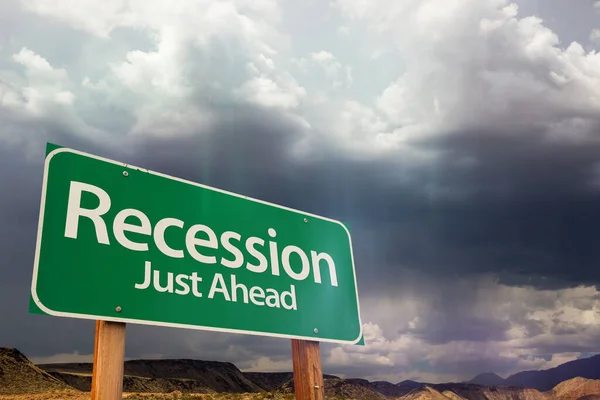Are You Worried About A Recession?
“Look at this, a recession is about to hit!”

Everywhere you look, people are calling for a recession to hit. In fact, many big name investors and gurus have been calling for a recession for most of the last two years.
During that time, stocks have gone up 50%.
The primary reason people are calling for a recession is that a number of signals that have previously predicted recessions are once again flashing “danger.”
For instance, the yield curve has been inverted for nearly two years. Historically a yield curve inversion followed by a subsequent dis-inversion has predicted every recession since 1980.
You can see this clearly in the chart below. Anytime the blue line broke below 0, the yield curve was inverted. You’ll note that recessions (grey bars) hit soon after the yield curve became dis-inverted (the blue line broke back above 0).
Looking at that chart, many investors believe it’s time to dump their stocks and prepare for a recession and market crash. However, there are two problems with using this metric to invest in stocks today.
1) The pandemic and its economic impact messed up the usefulness of many metrics including the yield curve.
2) Stock returns vary dramatically during yield curve inversions.
Regarding #1, the pandemic/ economic shutdowns and subsequent Fed/ Federal Government interventions have never happened before. Never before in history has the economy been shut down. And never before has the Fed/ Federal Government pumped $11 TRILLION into the financial system in the span of 20 months.
Put simply, our current economic environment is completely different from every other environment in which the yield curve inverted. Case in point, today the Fed is talking about cutting rates while the economy is growing and inflation is falling.
That was not the case when the yield curve inverted in 1980, 1988, 2001, 2007, or 2019. So again, the pandemic messed up a lot of economic metrics that have been accurate in the past.
Which brings us to #2 in our list above: stock returns vary dramatically during yield curve inversions.
Stocks returned anywhere from -38% to +16% during the last five yield curve inversions. That is QUITE a range of returns. And it negates the usefulness of investing based on what the yield curve is doing.
Think of it this way… if someone approached you and said, “if you use this investing trick, you either lose 38% or make 16%,” you’d tell them to take a hike.
Well, that’s what stocks have returned during yield curve inversions.
As investors, our job is to make money, not look for any excuse to dump stocks and panic about something bad happening. And as I’ve outlined in recent articles, this means riding bull markets for as long as possible, and then side-stepping bear markets when they eventually hit.
In the very simplest of terms, you need to be invested in stocks, until an objective, verifiable tool (not your feelings or an inaccurate economic metric) tells you it’s time to “get out.”
I’ve developed a tool that takes ALL of the guessing work out of this problem. With just one look at this tool, you can tell whether it’s a good time to buy stocks or not. I detail it, along with what it’s currently saying about the market today in a Special Investment Report How to Predict a Crash.
More By This Author:
Is The Stock Market About To Crash?Why You Should Avoid Being Bearish Right Now
The Fed Has Made A Crucial Mistake… What Does That Mean For Stocks?





